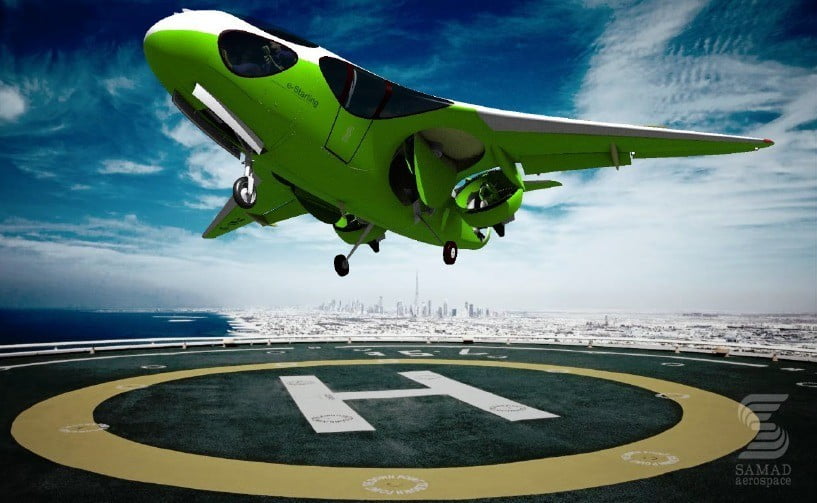UK-based start up Samad Aerospace on Tuesday introduced at the Singapore Airshow 2018 its eStarling and Starling Jet concepts for a vertical-takeoff-and-landing (VTOL) business aircraft, unveiled a 1:10 scale model of the identically shaped aircraft, and announced an ambitious development schedule. Designed for intra-city travel, the electrically powered eStarling has a projected range of 348 nm and a top speed of 261 knots, while the electric hybrid Starling Jet’s anticipated range and top speed are 1,303 nm and 400 knots, respectively. Diesel fuel and/or batteries will power four thrust-vectoring electric fans, while a fifth, tail-mounted engine will provide only forward thrust and charge the aircraft’s batteries. Current off-the-shelf technology is adequate to meet the aircraft’s performance targets, said CEO Seyed Mohseni.
Samad, headquartered at Cranfield Technology Park, plans to develop the eStarling first, and expects to have a full-scale demonstrator flying by late March 2019, Mohseni said, with deliveries of the eStarling anticipated to begin in 2022. The Starling Jet, aimed at the business jet and executive helicopter markets, is planned to fly in 2024. That schedule is dependent on raising £40 million ($56 million) in investment during the airshow. Thus far, £4.5 million ($6.3 million) has been invested in the project. He estimates total cost to bring the aircraft to market is £90 million ($126 million).
Samad plans to establish partner technology centers in Asia and Europe to help develop the aircraft, and is “considering Singapore, Malaysia, and Hong Kong as possible places,” Mohseni said. Its aerodynamic design and electric power are expected to reduce operating costs by 50 percent, he said, and production models of the eStarling and Starling Jet will cost about £4.8 million ($6.7 million) and £6.4 million ($8.9 million), respectively. The aircraft will be piloted, but with its level of automation “anyone with 20 hours” of training will be capable of operating the aircraft, and future autonomous versions could be created, Mohseni said.
Given the unique nature of the aircraft, “One of the key challenges we have is certification,” Mohseni acknowledged, and the company is already in contact with the FAA and EASA.


